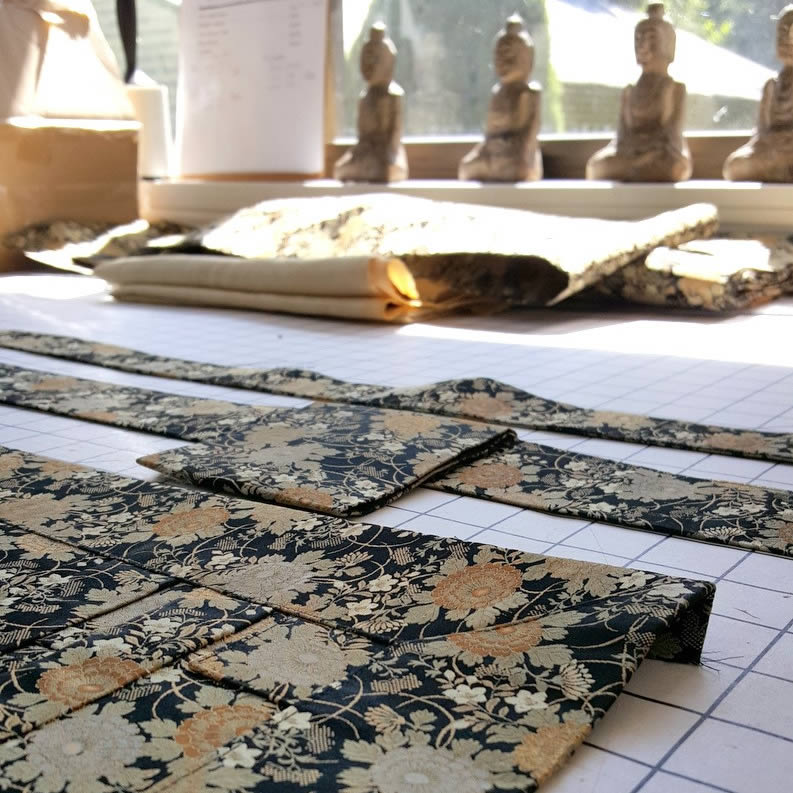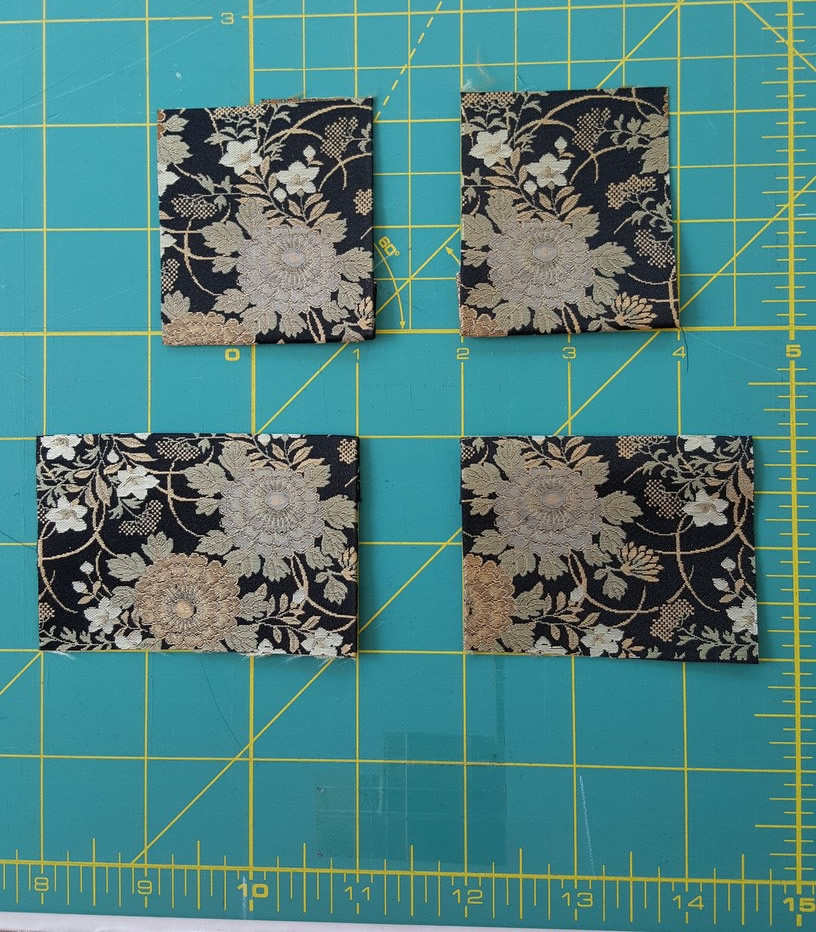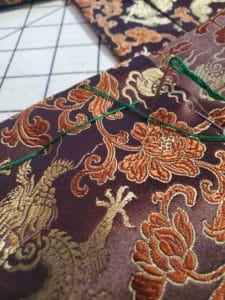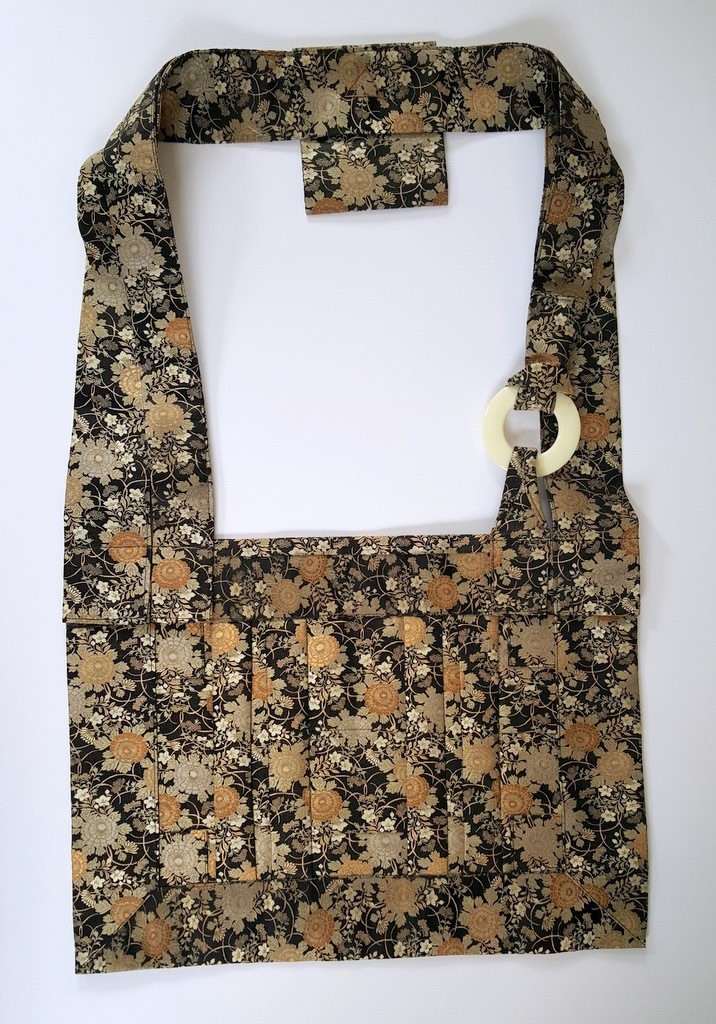
Many weeks in our Vashon Island workshop, Lidunn handcrafts beautiful rakusu. In this case from a few years back, she re-purposed a Japanese obi into a custom rakusu for a customer. A shortened version of Buddha’s robe, the rakusu is a symbolic garment worn by Buddhist practitioners. Its form has evolved over centuries, incorporating elements from various traditions as it’s made its way across geography and time.
History

Each element of the rakusu has a story. The many individual panels recall robes in Buddha’s time, when mendicants scavenged used pieces of fabric, even burial cloth, to make their clothing. The straight lines and right angles resemble cultivated fields, and the wooden ring is a nod to how Chinese monks fastened their robes to keep their arms free for physical labor. Today’s rakusu is most visibly linked to the Zen traditions from Japan.
Modern Use
Buddhist practitioners may begin wearing a rakusu to mark a milestone, such as receiving the precepts in a ceremony called jukai, or becoming a teacher. One’s lineage can inform certain aspects of the rakusu: Rinzai and Soto traditions each determine the number of strips of cloth, the pattern, and the color of the back panel. On the back of the collar of the rakusu there is an identifying embroidered stitch that represents each of the existing schools of Zen. The Soto school uses a broken pine needle design, the Rinzai school a mountain-shaped triangle.

After receiving the rakusu, it becomes part of the ordained Buddhist’s robes, serving as a tactile reminder of one’s lineage and devotion.
Some practitioners sew their own rakusu, perhaps taking weeks to complete the task. They may also choose to request help from a seamstress experienced in crafting Buddhist garments, like Lidunn.
Process
Lidunn started work on this obi by looking closely at the fabric’s print, color, and texture to see what patterns emerged organically, and how to make it fit the traditional Rinzai layout. Next, she cut the fabric into individual pieces and ironed. Her advice to practitioners doing it themselves? “Always iron. It makes life so much easier.”
Once each piece was set according to pattern, Lidunn sewed them into place. It’s meticulous, challenging work, each rakusu is a puzzle to be solved. “It requires precision. And working with a fabric like this is very special.”
Lidunn made her first rakusu for her own ordination at Mt. Baldy Zen Center in 1999. Since then, she has made countless rakusu for practitioners all over the world.
At Still Sitting, we make each bespoke rakusu individually, so practitioners may choose one of our fabrics, or send in a fabric or a ring of their choosing. For more information, write to us at office@stillsitting.com


Good morning!
I bought a round, black zafu with cover and the shell fill. The fill has become compressed over the past two years and needs to be replenished; I couldn’t find a reference for this at Still Sitting online. Can you help me out?
Thank you,
Ronald K. McHaney
Hi Ronald,
Thanks for your message. We are happy to sell you some kapok. If you email us at office@stillsitting.com, we can send you a link for payment and get it out to you.
Warmly,
Sarah
Hi. Just sent an email, and I’ll try this too. Do you make Soto rakusus without the ring?
Thanks
As you all are in the busy, perhaps you can answer my question: Certain colors are clearly defined by role: black and brown specifically. It is stated elsewhere that black is for a priest and blue is for ‘lay’ person; brown is for a transmitted teacher. When is green or grey used? As well there is pamsala-rags-multicolor. I appreciate any input.